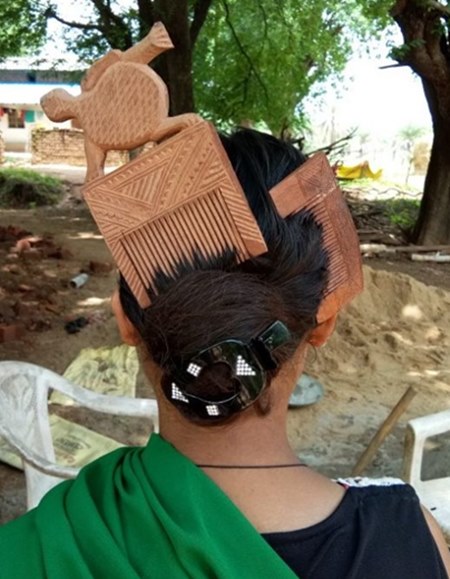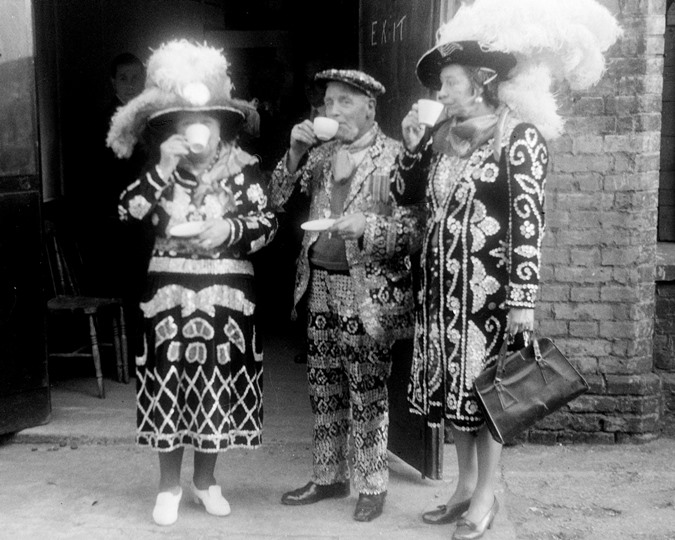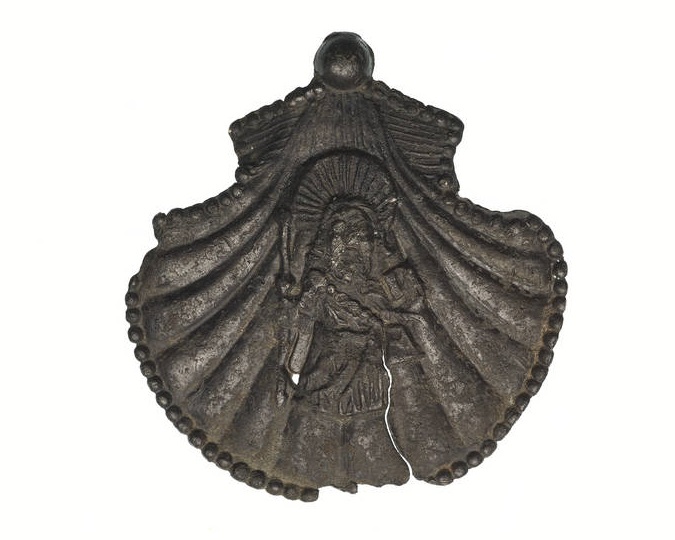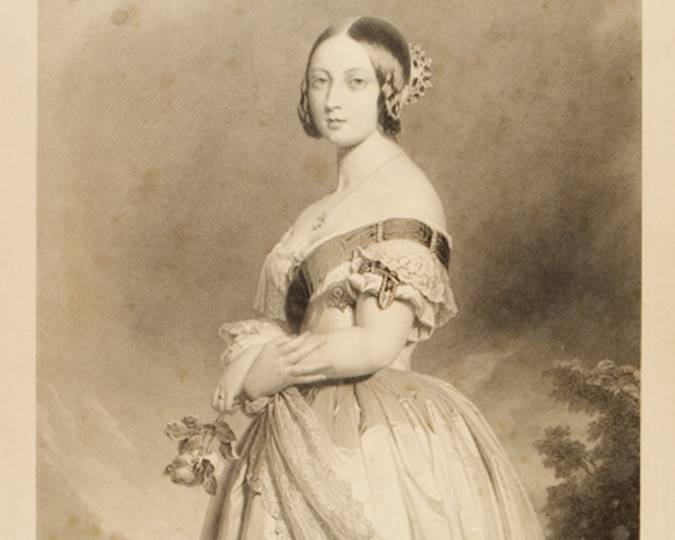Love can be strange, and sometimes, so can tokens of love. Looking through the Museum of London’s extensive collection, we throw the spotlight on some quirky ‘love tokens’ with an element of craft, which have both romanticism (of creating something with one’s own hands) and practicality (spoons, stay busks or ironing boards!). Interestingly, the similarity of many of these customs range from Europe to Asia!
The act of presenting a token of love to the person of one’s affection has been around for probably as long as human relationships. But depending upon which part of the world you are in, or which time period we look at, we can often find interesting proposal rituals that are rooted in local traditions. Often these practices evolve over time, in other instances they fade away and/or become commercial crafts representative of a long-forgotten tradition.
As we looked through the Museum of London’s extensive collection, we chose — for this article — ‘love tokens’ with an element of craft, which have both a sense of romanticism (of creating something with one’s own hands) and practicality (spoons, stay busks or ironing boards!). It was also interesting to find similar fascinating proposal rituals from Scandinavia to India, shared by our colleagues, which draw parallels transcending modern-day boundaries.

A post-medieval silver penny of Charles I, probably bent to form a love token, dating between 1625–49. (Courtesy: Portable Antiquities Scheme)
Bent/bowed/crooked coins
In Britain, the practice of giving ‘love tokens’ has been around from at least Roman times — if not much earlier — says the museum’s Senior Curator (Post-Medieval), Hazel Forsyth. Excavations and mudlarking expeditions on the Thames river banks have often uncovered bent or bowed coins ranging from as far back as the 16th century. The breaking of gold and coins were often included as part of the marriage ceremonial contract, as noted by Loreen Giese in Courtships, Marriage Customs, and Shakespeare’s Comedies (2006), but ardent suitors would often bend the coins and present them to the lady they wished to court as a symbol of the strength of their love, affection and intent.
Even though clipping, defacement and other wilful damage of coins was a treasonable offense , some took a risk by presenting a bowed or bent coin to their lady love. If the love token was accepted, that meant the suitor was successful; if they were discarded, it was a rejection. It has been surmised that many of the ‘crooked coins’ found on the banks of the River Thames — most of the surviving ones are from the 17th and 18th centuries — carry legacies of unrequited love. Often in these coins, the head of the monarch would be rubbed clean and initials of the giver or/and the intended would be engraved. Some of those accepted would even be worn as a pendant or incorporated into jewellery to be worn close to one’s person.
‘Leaden hearts’
Around the 19th century, such love tokens/coins took on an additional meaning as they “were created by convicted Britons before they were transported to Australia,” writes Michele Field in Convict Love Tokens (1998). Smoothed coins engraved with affectionate messages were gifted to loved ones by convicts awaiting execution and transportation. These mementos of affection were often known as ‘leaden hearts’. Among the ones in the museum’s collection, there is one inscribed: “George Wright born May 27th 1806 Aged 20 years to Ann Lee”; “In my dismal cell I lie, In sorrow grief and woe, For my time it seems so long, My doom I wish to know.”
These love tokens were first a time-filling hobby on the hulks, writes Field, but soon became “postcards before sailing”. Seeing some of the excellent engraved art work on a surface 36mm in circumference, it wasn’t a surprise to find that some convicts often paid fellow prisoners skilled in metalwork to engrave the messages and stippled decorations. Unlike the bent coins, these tokens could be meant for any loved one — sweetheart, parents or children.
Close to the bosom
With sea trade being a major industry of employment in the 19th century, many sailors would spend time at sea making tokens of love for their women on land. Sometimes, these included coins (as we’ve mentioned before) but an interesting gift was that of a whalebone corset or stay busk. These were often engraved and decorated by sailors on a whaling ship. This art form — known as pictorial scrimshaw — began in the early 19th century as a leisure activity for whalers who were often at sea for up to four years. Traditionally, the whalers used sailing needles to etch decorations and inscribe messages on walrus tusks, whale teeth and bones and then fill in the scratches made on the ivory and bone with black ink.
Two such stay busks in the museum’s collection are examples of different styles and calibre of workmanship. While one has basic designs with a heart and “RD AC 1791” etched on it, the other has very intricate designs of ships, flowers and the letters “E.S” on top.
“A man would inscribe the busk with coded sentimental images for his beloved… But likely the thought of its proximity to her undergarments—and therefore, her naked body—gave the gift a sense of physical as much as emotional intimacy,” writes Lisa Hix in Collectors Weekly. These stay busks were inserted into the front of stays or corsets to flatten the wearer’s stomach.

An engraved sperm whale tooth mounted on silver. Presented Alexander Munro to Sophia Knight, probably as a love token. (ID no.: 2018.25)
Tooth-sweet! Sweet tooth!
In another example of a carved scrimshaw love token within the museum’s collection is a sperm whale tooth carved with an image of a whaling ship on one side, and an inscription on the other. The inscription reads: “Taken from the jaw of a Sperm Whale captured by the bow boat of the Ship Foxhound / Presented by Alexander Munro to Sophia Knight / Sept 30th 1837.” The two segments of the mount are both stamped with the hallmark of Benjamin Smith III, an important London silversmith. The mount is finished in a Rococo revival style, with the base in the form of a stylised sea shell. The high-quality silver mounts imply that Munro had a successful voyage, as each sailor would take a share of the profits based on his seniority.
Interestingly, what Munro may or may not have known, sperm whale tooth is an important traditional token of love and marriage in Fiji! Known as tabua or tambua, a sperm whale tooth would often be presented by a groom and his family to the parents of the future bride, while asking for permission to marry her. It is also considered auspicious to gift jewellery made from whale teeth, such as necklaces.
Spoonful of love
Long before store-bought gifts of love became popular, suitors had to polish their craft skills because just to propose — in certain cultures — one had to be adept at wood carving! A popular example within the UK of such a tradition is the Welsh lovespoon. While gifting wooden household objects inscribed with a person or couple’s initials is common, the Welsh tradition of carving designs with specific meanings and intent is quite unique.

The symbols carved on the lovespoons would convey the intent of the suitor presenting the spoon. (Courtesy: far-left and top, Aberystwyth University School of Art Museum and Galleries; bottom, Amgueddfa Cymru – National Museum Wales)
Such objects are collectively called ‘treen’, derived from the old Middle English ‘treowen’, meaning literally ‘of a tree’. While the Museum of London has a couple of apple corers or cheese scoops with engraved initials that could be love tokens, lovespoons such as those on display at the National Museum Wales, are examples of a custom, wherein the suitor would present a carved lovespoon to a woman expressing his affection and intent (such as heart for love, a wheel for loyalty, lock for protection, etc.). His suit was successful only if the woman accepted the gift. One of the earliest known surviving examples of these intricately carved, symbolic lovespoons date back to the mid-17th century.

A mangle board/mangletre, dated 1799. (Courtesy: Gift of Mrs. Robert W. de Forest, 1933; The Metropolitan Museum of Art/Public domain)
Ironing it out
Another example of suitors ‘treening’ (pardon the pun) to court women is in Scandinavian countries such as Norway. Conservation Manager Jannicke Langfeldt shares a Norwegian tradition wherein a man would gift an ornately carved mangletre, a wooden plank “used in conjunction with a wooden rolling pin to smooth wrinkles from linen” (Jay Raymond, Mangle boards of Northern Europe, 2015). The earliest ones date back to the 16th century.
They’re beautifully carved and decorated with folk symbolism, often with a horse (a common animal in woodcarving in Scandinavia) as the handle, says Langfeldt.
According to various accounts, a suitor would place a mangletre on the doorstep of the lady he wanted to woo. If the woman took the mangletre inside, his proposal was accepted. If the board remained outside for over a day, it was a rejection.

A woman from India’s Muria tribe wearing hand-carved combs, traditionally gifted by suitors. (Courtesy: Mushtak Khan/Sahapedia.org)
Love through a fine-toothed comb
From northern Europe, we travel across the world to central India, where wooden combs were once the objet préféré for men to express affections to their love interest. Now mostly available in shops as traditional craft, till about the mid-20th century, boys (chelik) from the Muria tribe in Chhattisgarh would carve exquisite designs on wooden combs to gift it to the girl they liked, their motiari. The girls would wear the comb in their hair, sometimes multiple combs, indicating that they had multiple lovers, says craft expert Mushtak Khan of Sahapedia.
Once the girl was ready to marry, she would take the comb carved by the chosen suitor and present it to her parents. It’s not known what happened to the rest of the combs, if any.
Do you know of other similar love customs? Share them with us on social media, tagging @museumoflondon. We’d love to hear from you.













